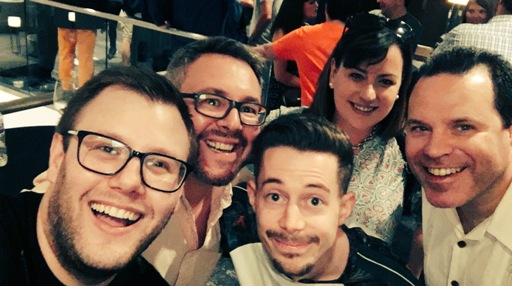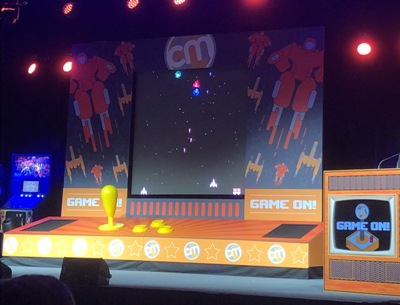It’s hard to believe Content Marketing World 2018 in Cleveland has come and gone. It was my sixth! With the giant video game screen, Content Marketing Institute went all out (as usual) for the most impactful marketing conference available.
Every year I look for themes and trends that will drive the next year or so of content marketing. This year felt a little different. Instead of focusing on what content marketing is meant to do (build an audience that you can eventually monetize through content) and how to build it into our businesses, it seems like it’s grown up a bit (or leveled up to stay with their Game On theme!).
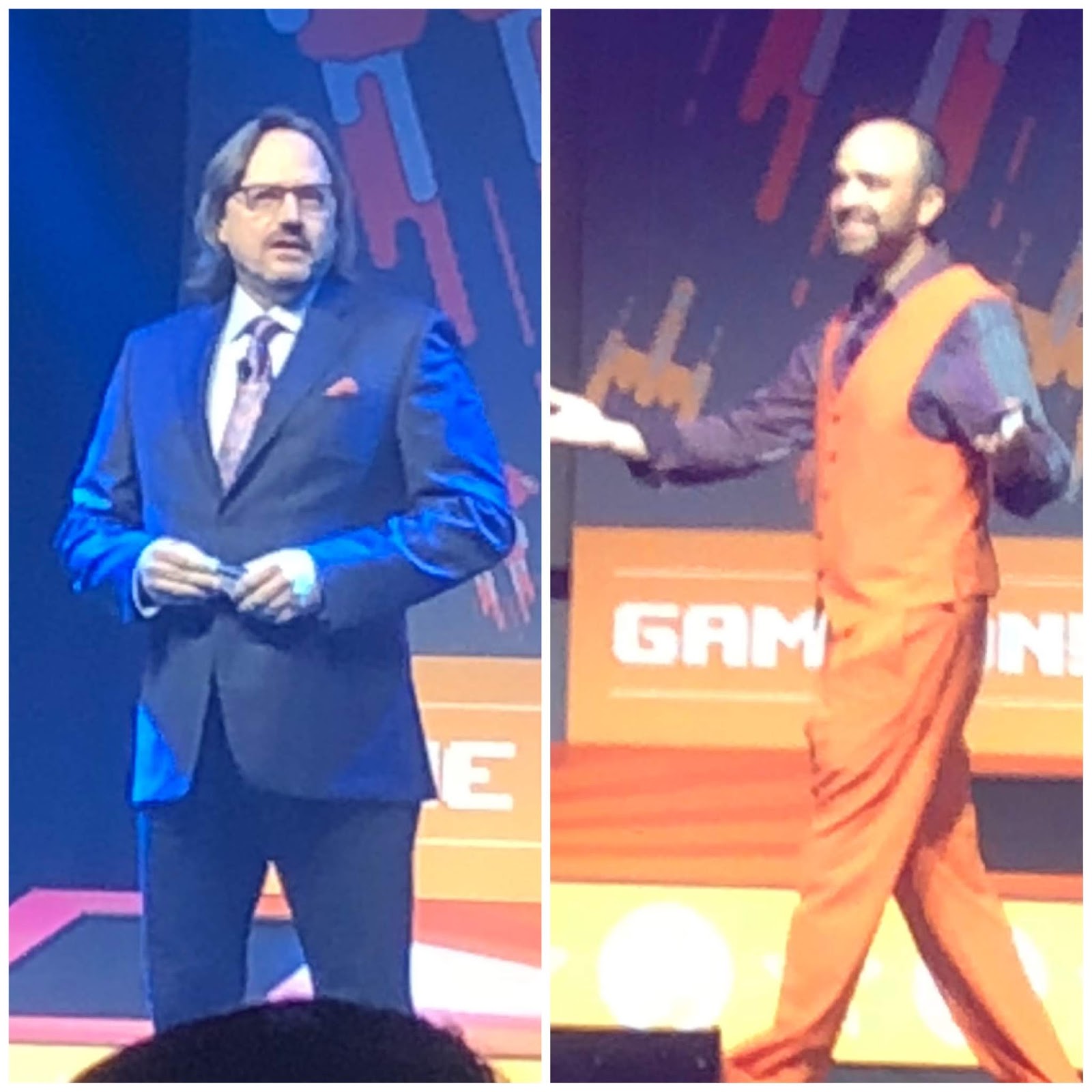
According to Robert Rose, we’re now at the point where a new player is joining: trust. Trust is built by truth. Our job as content marketers is to create content that shapes the beliefs that create the truth. This year’s sessions (at least the ones I attended) offered tips and strategies to help us do that. Presenters at Content Marketing World 2018 offered many ways to produce content that resonates with our audience and stands out.
Think Bigger
Joe Pulizzi discussed the 3 R’s for content marketing:
- Record Your Goals: Less than 10% document their goals
- Repeat: Strive for consistency
- Remove: Get rid of distractions and anything that doesn’t help you reach your goal
Also, he stressed thinking bigger about your goals. They should be unreasonable. Even to the point of getting rejected the first time around. Stand out by being meaningful for your customers so they know what’s in it for them.
Think For Yourself
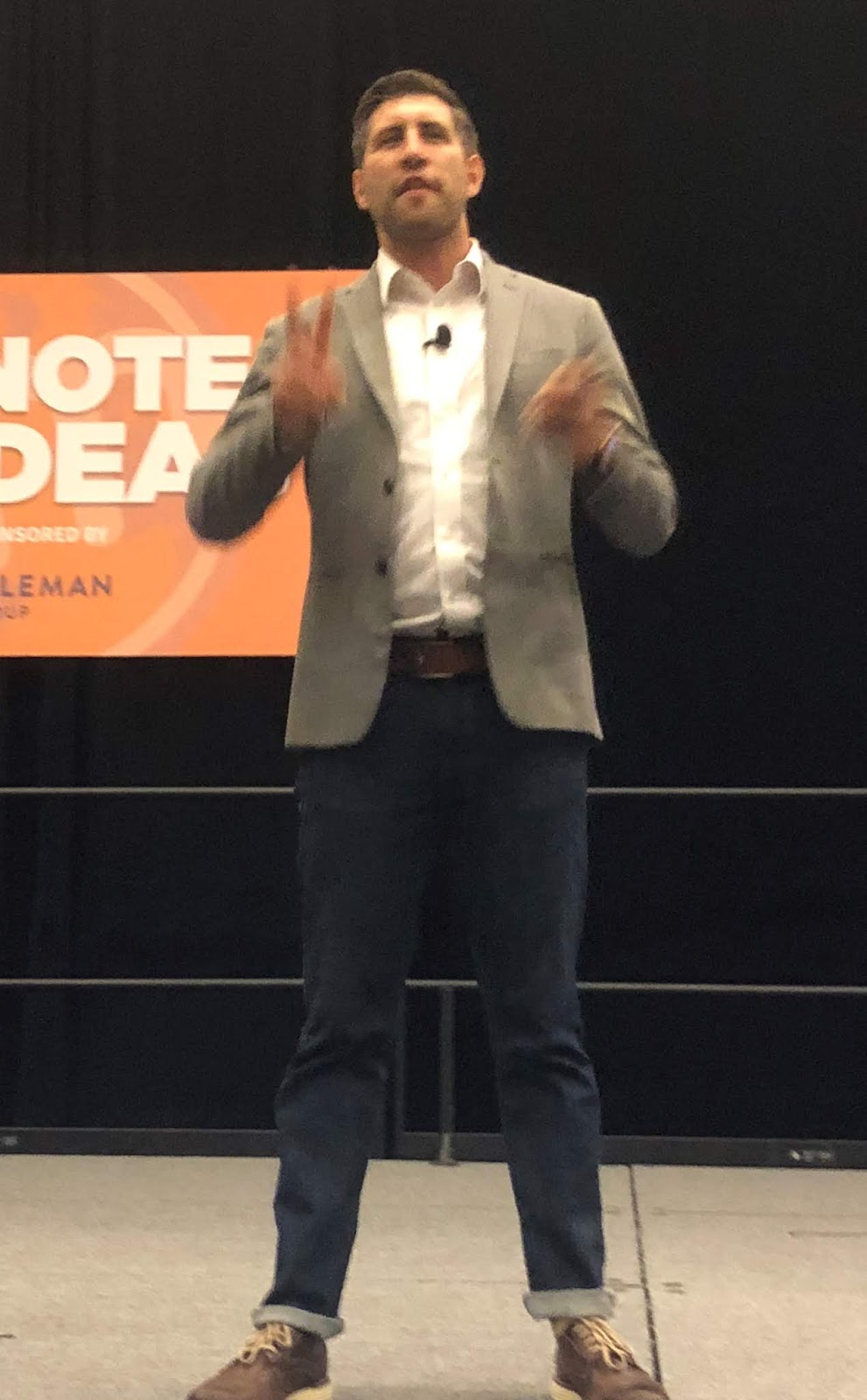
Authenticity was a big theme at Content Marketing World 2018, but that’s nothing new. What was refreshing though was Jay Acunzo’s advice: think for yourself. Stay away from best practices because what works for one brand doesn’t always work for others. There are specific contexts and circumstances that lead to success. What’s important for brands is to understand what’s going to work best for them.
We need to ask questions. Better open-ended questions. Seek out the answers you need until you find the right answer for you. Acunzo says, “We need to stop acting like experts and start acting like investigators.” Following that up with:
“Exceptional work isn’t created by the answers others give us but by the questions we ask ourselves.”
How often have you applied best practices and had underwhelming results? Best practices lead to mediocrity because many apply them and in different contexts than the original. To stand out, you need to learn more about your customer.
He referenced his upcoming book, Break the Wheel, explaining the concept and how it came from Game of Thrones. Each kingdom is a spoke in a wheel, one may be on top now until the next spoke is on top. It’s a cycle of the same. The only way to break the cycle is to “break the wheel.” Similarly, if your content is a collection of best practices, it’s the same as spokes making their way to the top. Break the wheel by finding your own answers and thinking for yourself.
The Curiosity Gap
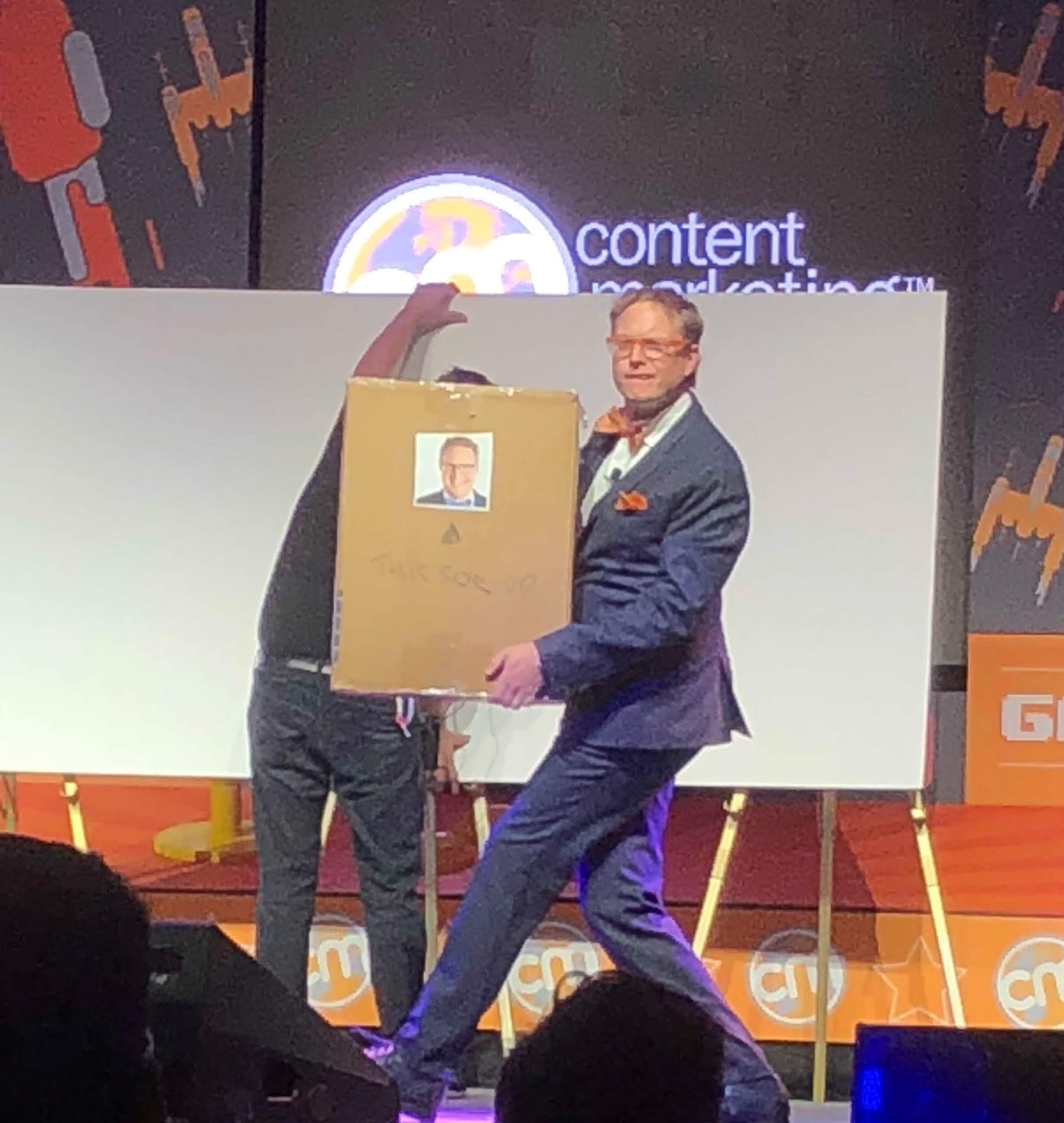
What do you do when you’re bombarded with stats that claim people have the attention span of a goldfish? This thought has been around for years (I wrote a blog post in 2014 explaining why the idea is crap). The answer is that we end up shortening our content because we think that’s the only way people will read it. So, we pull things out. Ironically, according to Andrew Davis, we remove the parts that make the content interesting. What we fail to realize is that good content gets consumed. Average content does not. Davis explained how to pull people into your content by focusing on our curiosity. People are curious. We want to know things. We want answers!
When Davis took the stage with a giant box and set it on a table, we wanted to know what was in it. Did he tell us right away? Of course not. He teased and played throughout his presentation before revealing the contents. He explained exactly why we wanted to know:
- Between what we know and what we want to know is the Curiosity Gap
- The Curiosity Gap creates tension which is the emotional anxiety we feel
- By playing on this tension, we go from wanting to know to needing to know; we need closure
- Finally, there is the payoff. The outcome needs to be proportional to the tension your content creates
Stated as a formula, here is how you earn audience attention:
Attention = (Tension/Time) x Payoff
Many of us are creating case studies and white papers for our clients and companies. Most of these don’t include curiosity gaps, tension or payoffs. Our customers know the results because no one is going to create a case study in which their company failed. But, if you reorder the elements, you can create curiosity gaps. Start with the result and delay revealing how they did it for as long as you can. Think like a reality TV editor who creates tension before every commercial break to keep you watching.
Let Your Audience to the Talking
Who do we trust? Our friends and family. Who don’t we trust? Companies. If you can get your customers to tell your story for you, you increase your credibility. Here are two approaches to build strategies to do that.
Talk Triggers
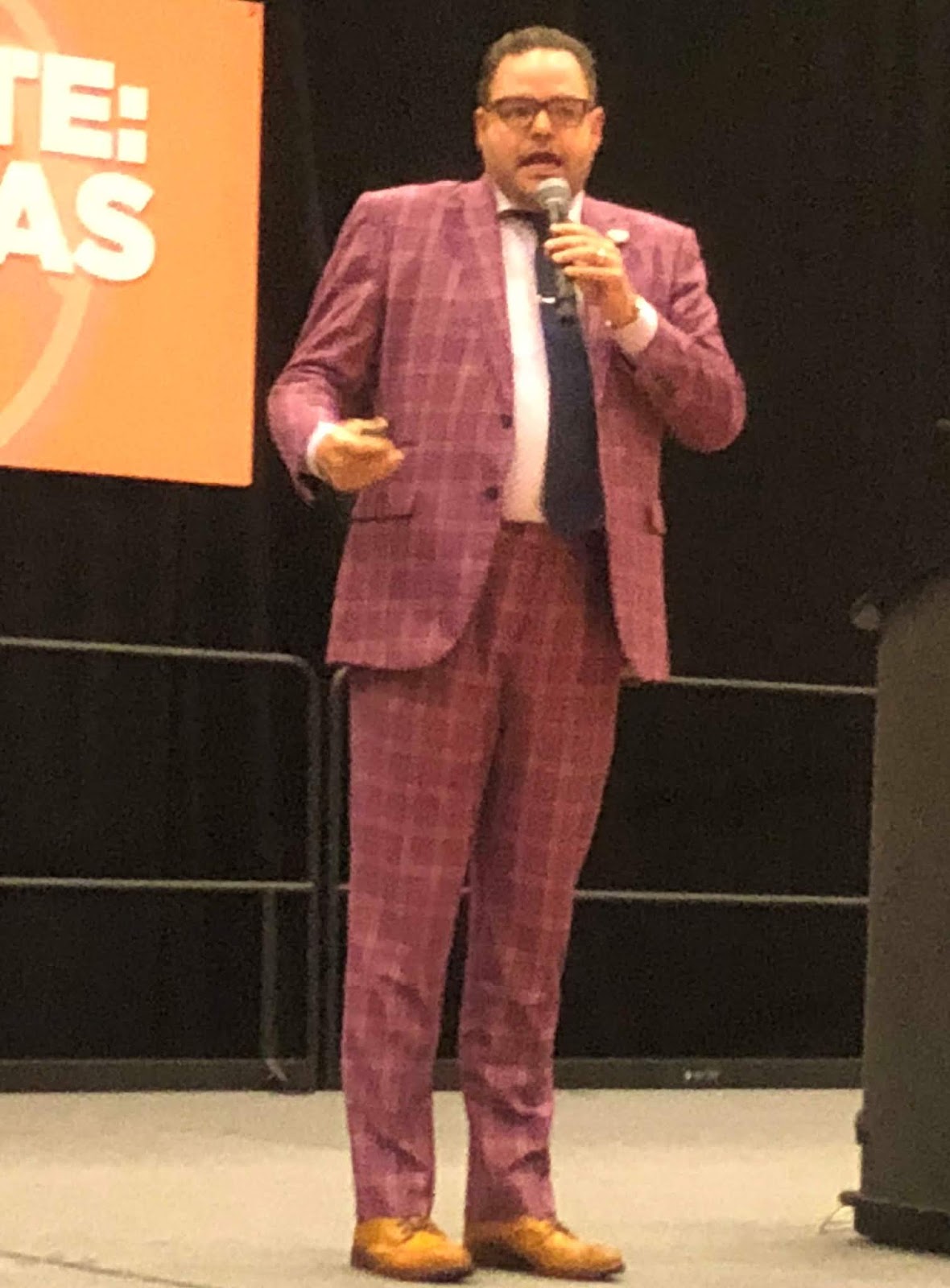
Jay Baer has a new book coming out called Talk Triggers. In it (and through his session), he discusses creating a word of mouth strategy. The main idea is that by giving your customers a story to tell, they will create customers for you. The following statistics help to prove this point:
- 19% of all purchases come completely by word of mouth
- 50% of all purchases come primarily by word of mouth
- 91% of B2B purchases come primarily by word of mouth
Talk triggers are strategic, operational choices that compel word of mouth. There are four requirements for creating a talk trigger that can grow your business:
- Remarkability: We discuss things that are different and ignore average
- Repeatability: It is far easier to use content to amplify something that is always true
- Reasonableness: Experiences should be big enough to drive people to talk about it, but not so big to be unbelievable
- Relevance: Your content must have context and accentuate who you are and what you’re about
User-Generated Content
One way to make sure your content is authentic is to let your customers create it. Jacquie Chakirelis talked about the benefits of user-generated content (UGC). UGC is any content contributed by unpaid persons. It has a definite effect on the performance of the content. According to Salesforce, UGC improves performance on every digital marketing channel:
- 90% of visitors spend more time on a webpage that has UGC
- 73% increase in email campaigns using UGC
- 50% increase in engagement with UGC
- 5x the click-through rate with UGC
- 10% increase in conversions by using UGC
And, the Ipsos Millennial Social Influence Study shows that UGC is:
- 35% more memorable than other media
- 50% more trusted than other media
- 20% more influential on purchase
Getting your audience engaged is how you build strong social content. Encourage your customers to interact with you. Create content that makes them the hero. Give them opportunities to create content you can use (don’t forget to get their permission).
Do Something Different
With so much content out there, sometimes it makes more sense to take a different approach. Zag when everyone else is zigging. The following two approaches are taking the lesser traveled road.
Who Needs Google When You Have Propinquity
Everyone has to play the Google game, right? Maybe not. Tom Martin points out that we’re mathematically going to lose with Google. We have to rank on pages 1 or 2 (really, it’s page 1). 99.999349% of those trying to rank, fail. Instead of playing by Google’s rules, what if there’s another way? That way is propinquity. What?
Propinquity is the concept that with greater physical (or psychological) proximity between people, the greater the chance that they will form friendships or romantic relationships. It applies here in that if you can get your content on the websites where your customers are, you can reach them before they go to Google. And, if you’re able to get your content on many sites, you could rank for specific keywords from all these sites. This can help protect against any Google algorithm changes. All that said, this is not an easy approach. But, if you can do it well, you’ll definitely have an advantage.
Signature Sound
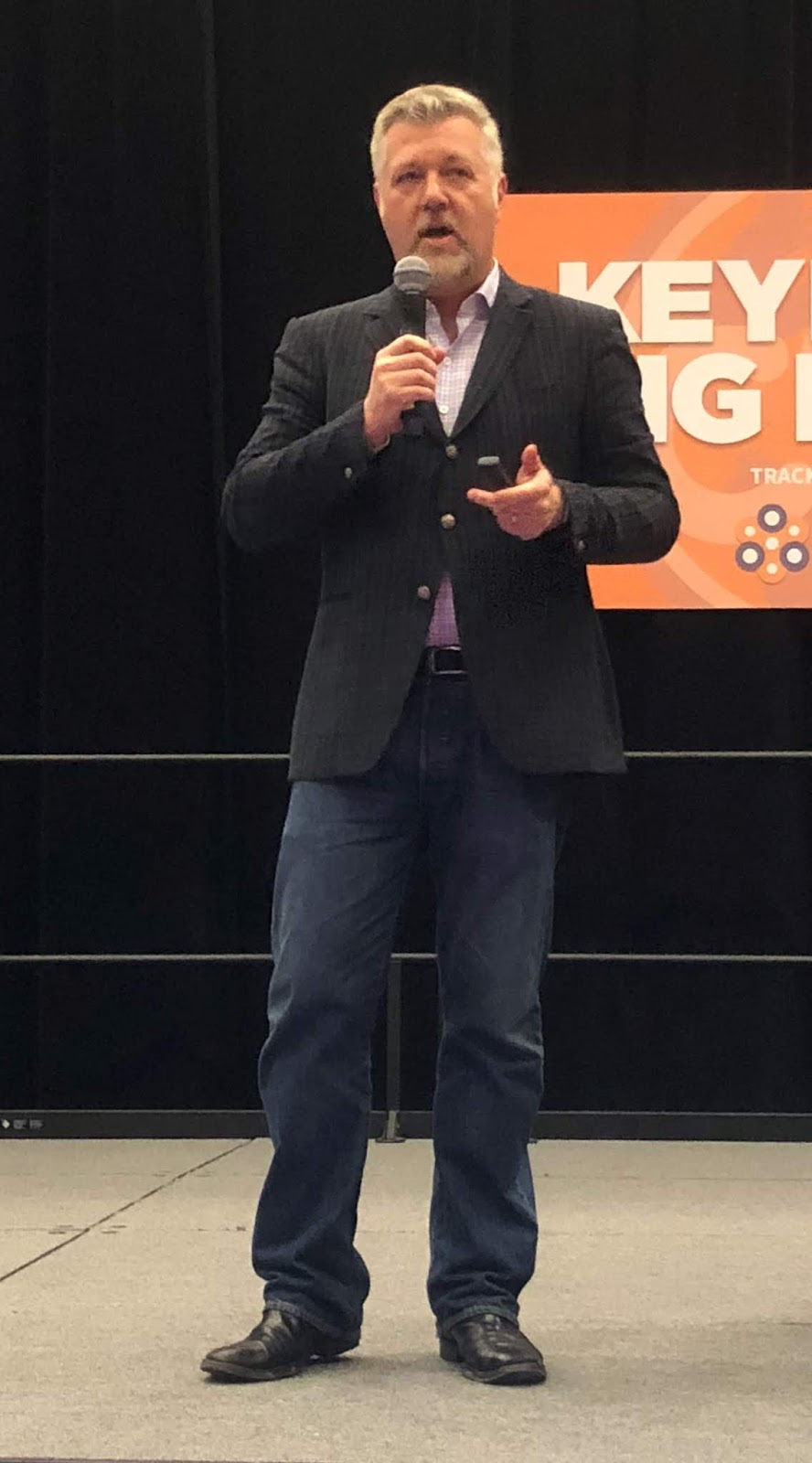
When you think of audio content, most think of podcasts. But, what if you could create a signature sound for your brand? Recognizable sounds include Southwest’s “ding” or the voice of Tom Bodett for Motel 6.
Tom Webster explained that audio content requires a different approach to your story. We experience it in a different way. Sound is very important to brands. There is a ton of content for the eyes, but not much for the ears.
Audio is the fastest path to connection. What we hear, we feel. It’s a faster trip to the brain. When you hear something, you don’t have to think about it like you do with things you see. There aren’t a lot of brands focusing on audio content, so take advantage.
Speaking of Different…
This year, a few speakers took new approaches (at least new to me) at Content Marketing World 2018. The results were presentations that stood out:
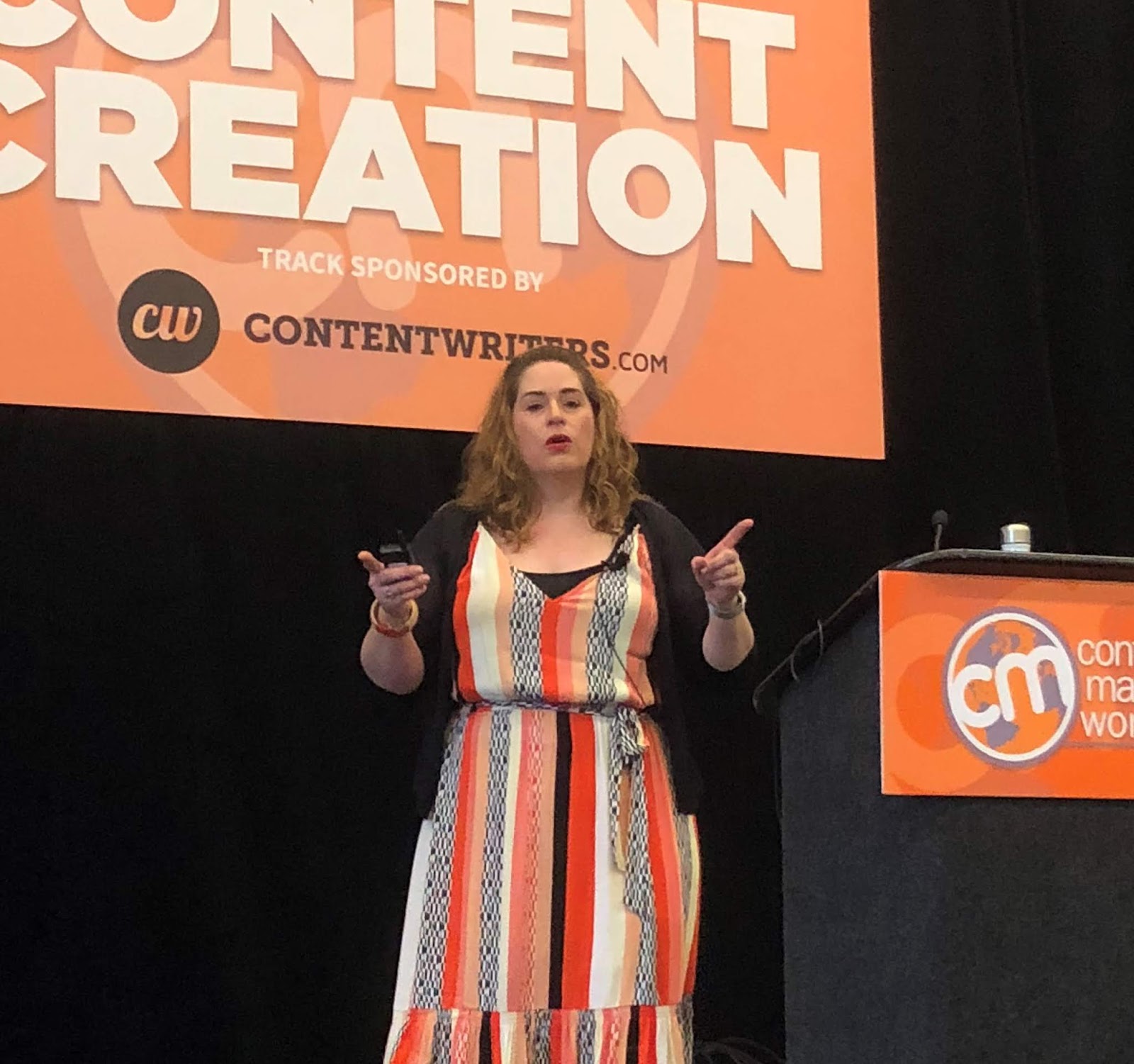
- Ahava Leibtag: Starting out the session with a sing-along to Bon Jovi’s “Livin’ on a Prayer” may have been the best opening I’ve seen. She offered writing tips based on the songwriting approach of many favorite artists. This was my favorite session.
- Andrew and Pete: These two turned their presentation into a game show that got us all involved to help the “winner.” Oh, and their main message was how to stay out of the content “Danger Zone” through the Remarkability Trifle. Yes, you read that right…Remarkability Trifle.
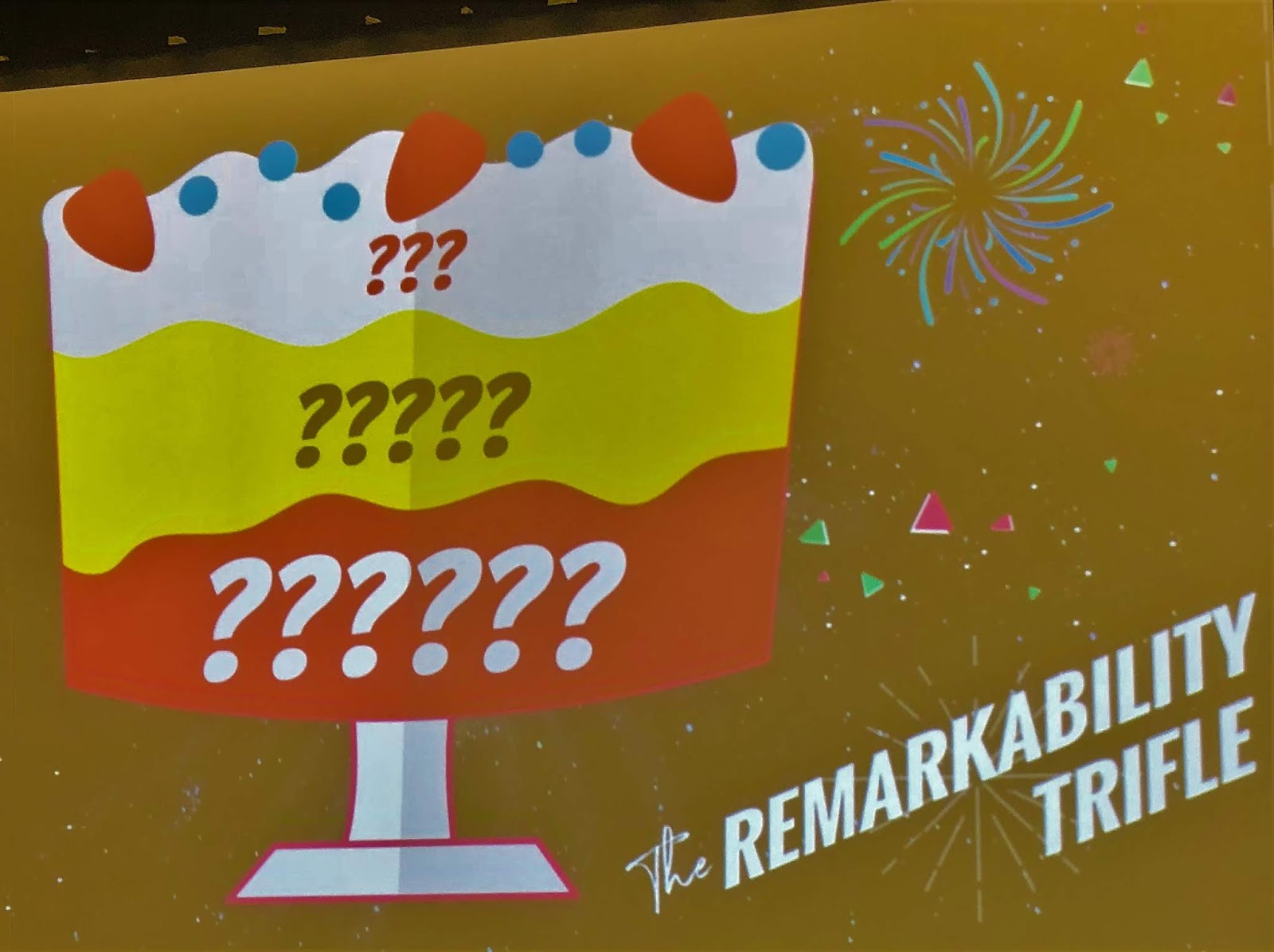
Joe Lauzaskas: This session was intriguing because it was about the neuroscience of storytelling. Oxytocin fosters human emotion. He examined if stories can release oxytocin. Stories illuminate our minds as neurons fire together. Stories make us remember and care. Content marketing works because our brains are programmed for stories.
But, what’s so different here? How about a live neuroscience experiment? Lauzaskas tested five members of the audience to see how they would respond to an emotional ad. The results may not have gone as expected. The responses waned after the midway point of the ad instead of peaking at the end and the emotional payoff. That said, it was an interesting look at what he presented in action.
As always, thanks for taking the time to read my post. This is only part of what I learned at Content Marketing World 2018. There was so much more. I didn’t even mention Tina Fey, Ann Handley, Dewitt Jones, Melanie Deziel or Andy Crestodina! They were all incredible! As always, this event left me inspired and energized. It’s always bittersweet as the event comes to a close each year. I’m excited to apply everything I’ve learned, and happy to say that at year eight, it’s still going strong.
